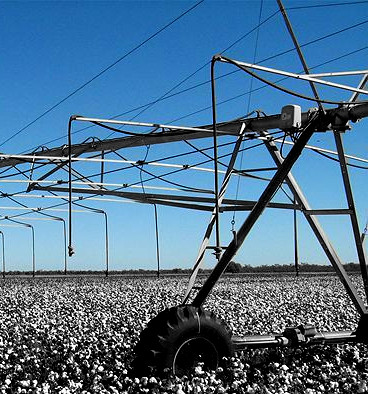Big farm plans questioned
 Plans to open up a vast swathe of the Northern Territory to agriculture are causing excitement and concern.
Plans to open up a vast swathe of the Northern Territory to agriculture are causing excitement and concern.
The Northern Territory Land Corporation (NTLC) has released 67,500 hectares of land as part of the Keep Plains Development. The plan is to allow farmers to grow new crops of fruit, nuts and cotton on an enormous scale.
However, conservationists say that the effects on the region’s rivers, as well as shifting rainfall patterns due to climate change, could make it a recipe for disaster.
The NTLC has selected AAM Investment Group (AAMIG), which is owned by a Brisbane-based agricultural investor, as preferred developer of the Keep Plains Development.
AAMIG is now seeking environmental, Aboriginal heritage and water approvals, as well as conducting negotiations with native title holders about the potential impact on sacred sites and other matters.
But the approach of selecting a developer and releasing land when no business case is publicly available has been criticised.
NT Farmers Federation chair Paul Burke says the production of mangoes, bananas, nuts and other crops is possible, but cotton will probably be “the backbone of the broader production system”.
“The proposal will initially be a dry land production system, which relies on the monsoonal rain event,” Mr Burke says.
“As they move through, they’ll put in the infrastructure where the soils and access to water makes it possible to intensify to irrigated [production].”
This is all occurring in a jurisdiction that does not charge irrigators to extract water from rivers.
Local environmental expert and lecturer Dr Keller Kopf says the Northern Territory lacks “baseline information” about its aquatic ecosystems.
“How much water can be extracted [by floodplain harvesting] before adverse impacts can be seen – we don’t know,” Dr Kopf has told reporters.
He said the increased extremes expected in a changing climate only add confusion.
“It’s not clear whether this means a net increase in rainfall, or a net decrease,” Dr Kopf says. “There may be more water over a short period of time, but the sum total of water flowing through these rivers may decline.
“Just because there’s more intense rainfall events doesn’t mean flows in these rivers will increase. It’s possible – but the forecasting is that even if it does increase, it’s just as likely that flows on average may decrease owing to longer dry seasons and more severe drought.”








 Print
Print